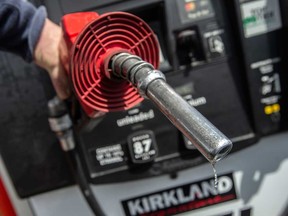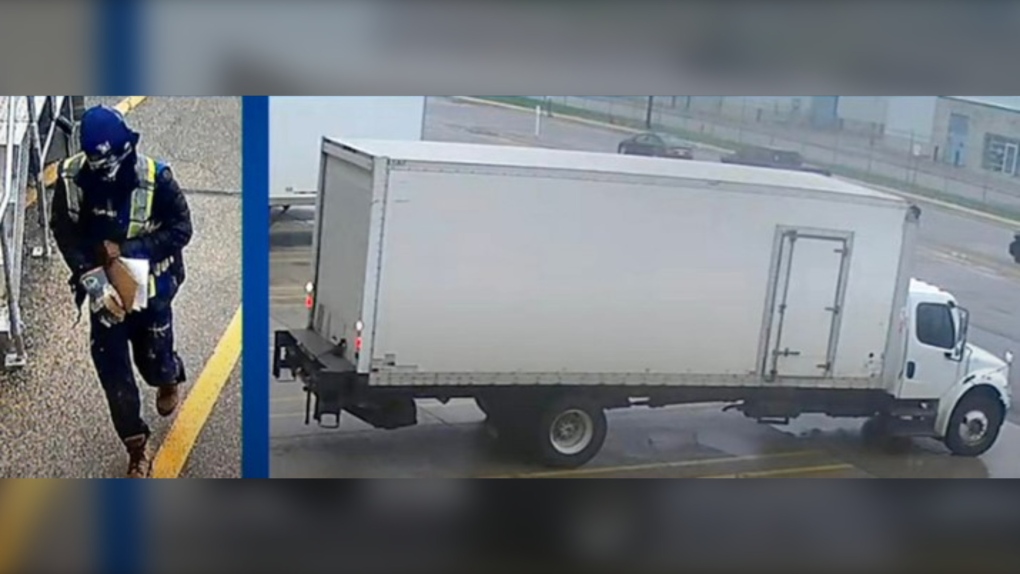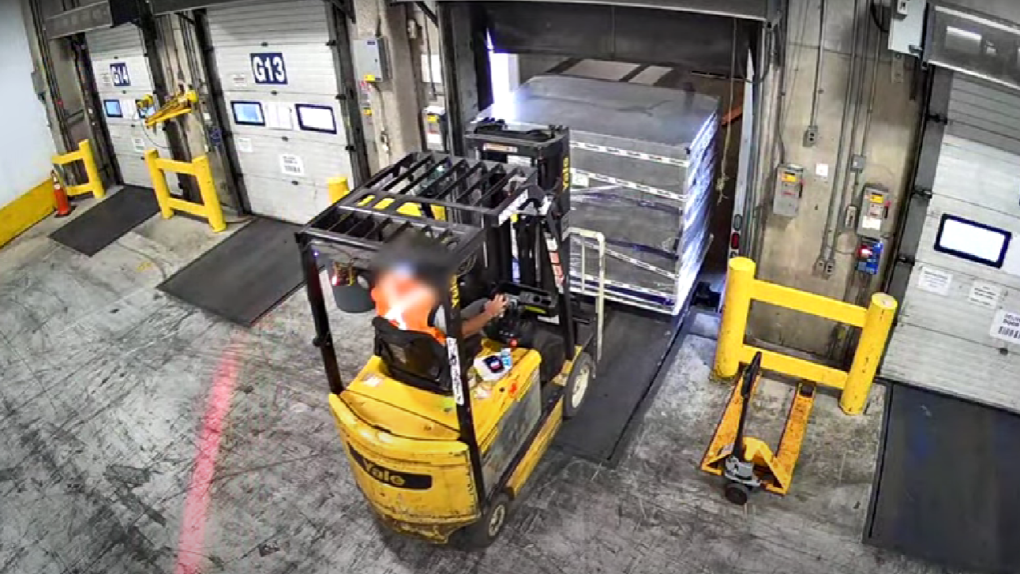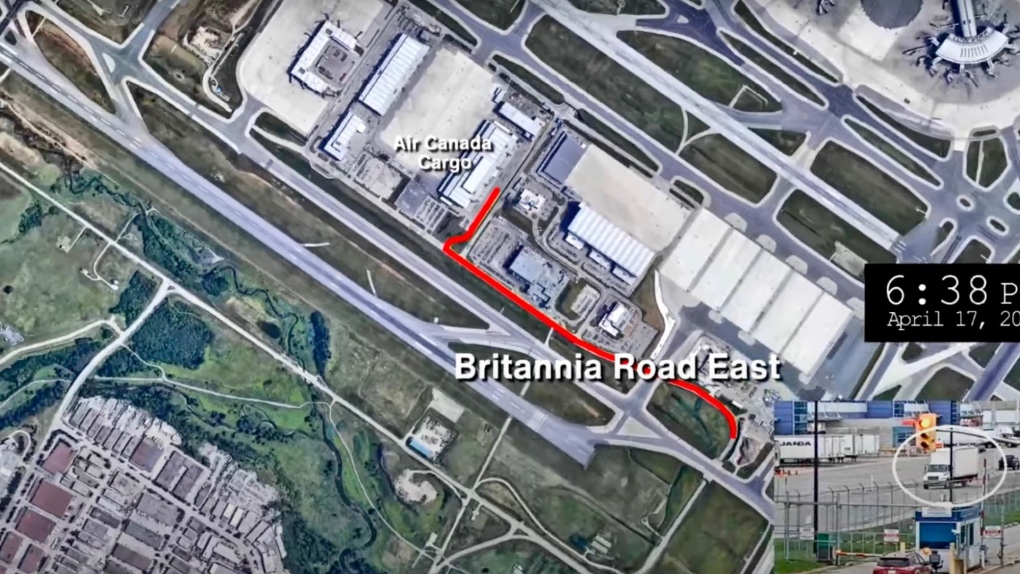Article content
There’s a price shocker coming at the pumps.

It’s a stereotype, but it’s true — Canada’s winters are cold. And many of us stay toasty by burning fossil fuels such as natural gas in our furnaces or the boilers that feed our radiators.
In an effort to cut down on greenhouse gas emissions and meet targets to reduce global warming, the U.K. has proposed banning fossil fuel-based heating in new homes by 2025. Cities in the states of California, Washington and Massachusetts are also trying to phase out natural gas.
If your home is hooked up to a district heating system, where a utility supplies heat directly, you may be able to tap into a variety of greener energy sources.
But if your home relies on its own individual heating system, as most do, what are the alternatives to fossil fuels and will they work in the colder parts of this country?
Here’s a closer look.
About 45 per cent of Canada’s emissions come from burning fossil fuels to make energy, including heat and electricity — quite a bit more than transportation (28 per cent), the Prairie Climate Centre reports. Of that, about half is from houses, shops, schools and other private and public buildings. The other half is from industry.
Nearly 70 per cent of the energy used in the residential sector comes from fossil fuels, a 2014 study estimated. Forced air furnaces and hot water or steam boilers with radiators, which most often burn fossil fuels such as natural gas, make up a majority of the primary heating systems in Canada, Statistics Canada reports.
“Very important,” said Fin MacDonald, program manager of the Zero Carbon Building program at the Canada Green Building Council, a non-profit that advocates for and certifies green buildings. In provinces such as B.C., Ontario and Quebec whose power grids don’t produce a lot of emissions, fossil fuel combustion from buildings represents the biggest source of carbon dioxide, he said.
That’s certainly the case in Vancouver, where more than half the greenhouse gas emissions come from buildings, said Brady Faught, green buildings engineer with the city.
While people may be concerned about a car idling for 10 minutes, Faught says “your house is basically idling all day.”
And it’s not just the gas it’s burning that’s the problem. Natural gas or methane — a greenhouse gas that traps heat far more effectively than carbon dioxide, causing much more global warming per molecule — also leaks from the entire distribution system used to deliver gas to people’s homes and furnaces, Faught said.


Buildings heated with fossil fuels can cut some of their emissions by reducing the need for heating through things like better insulation and reusing “waste” heat.
But in order to make a big difference, the green building industry is looking to electrify heating.
“The only fuel that we can truly make 100 per cent carbon neutral is electricity,” MacDonald said.
That’s why the City of Vancouver is trying to come up with regulations and incentives for homeowners to electrify their home heating.
“The ultimate goal is zero emissions,” said Faught, whose job is to develop policies to encourage green retrofits for single-family homes in Vancouver.
In provinces with an electrical grid based mostly on hydro, nuclear or other non-fossil fuel energy sources, such as Ontario, Quebec and B.C., replacing a gas-burning furnace with an electrical heating system can nearly eliminate a home’s emissions.
In some provinces, such as Alberta and Saskatchewan, power is largely generated by burning fossil fuels. For now, homeowners who want to cut heating emissions need to go beyond electrification and also install green power generation, such as solar panels.
Baseboard heaters are the most common option in use across Canada. They’re powered by electrical resistance heating, just like your toaster and oven. Electric forced air furnaces, electric convection heaters and electric radiant floors also use electrical resistance heating.
Heat pumps are far more efficient, because they simply move heat into your home, rather than generating heat. There are two kinds:
Air source heat pumps, which draw heat from the air. (Yes, it can work even when it is very cold outside, just as your freezer can use its heat pump to cool itself to -18 C in a 20 C kitchen.)
Ground source heat pumps, which draw heat from the ground and are sometimes referred to as geoexchange or geothermal heat pumps. However, MacDonald says the industry is trying to move away from calling it geothermal, as it gets confused with geothermal power generation.
[embedded content]
Baseboard heaters are popular because they’re very cheap and easy to install.
However, those and other kinds of electrical resistance heaters are very inefficient.
“They’re like just having a toaster running in your house all day … resulting in high electric bills,” said Faught.
For those reasons, baseboard heaters are often popular in rental units where landlords install them and tenants pay the cost of electricity.


That said, it’s possible to bring the cost down in a small home by making the building more airtight and better insulated.
David Turnbull, a former homebuilder and current manager of Enerspec Energy Consulting, said his company built a townhome complex in Edmonton where units were relatively small and so well-insulated that “you could almost heat the house with two hair dryers.” In that case, baseboard heating made financial sense.
Heat pumps are way more efficient than electrical resistance heating. Both MacDonald and Faught say it’s possible to get 300 per cent efficiency from a heat pump — that is, you can get three kilowatts of heat for every kilowatt of electricity you put in. They’re especially efficient in spring and fall.
However, MacDonald says heat pumps tend to produce a lower temperature heat than burning fossil fuels, and therefore don’t heat a building as quickly.
That means a building needs to be airtight and well insulated to keep the heat from escaping and reduce the “heating load” before you should consider this as an option — and even more so the further north you go.


Faught says air source heat pumps can heat an airtight, well-insulated home to a comfortable temperature until it gets to about -10 C outside. In places with colder winters than that, supplementing with baseboard heaters may be necessary.
One big advantage of heat pumps is that they don’t just heat homes, the can also cool them.
In fact, air conditioners are technically heat pumps. The difference with the heat pumps capable of heating homes is they can run in reverse.
Air source heat pumps are cheaper and easier to install, but less efficient and more expensive to run. That’s because the ground temperature tends to remain stable all year round — containing more heat in the winter and more “coolness” in the summer than the air.
However, ground source heat pumps tend to be a lot more expensive — and require more space — to install because it’s necessary to dig deep to access stable underground temperatures.


That can be particularly costly in places where the ground is bedrock, said Turnbull. It’s more economical if you’re building on clay or sand, he said, and especially if you’re digging anyway — for a parkade, for example.
Solar power is useful for generating green energy to run devices like heat pumps in provinces with a fossil fuel-based electricity grid.
However, there’s also solar thermal energy, where heat is collected directly rather than by generating electricity.


MacDonald said that tends to be more expensive than other options and requires lots of space for the solar panels. Because most of the heat is collected in summer, it also needs to be stored somewhere.
“If you have a pool, perfect,” he said. If you have a ground source heat pump, in theory you can also store the heat in its underground heat exchange loop.
Turnbull and Faught both think solar technology is not quite ready for heating individual homes in Canada (although solar thermal heating with storage has been successfully tested for district heating in Okotoks, Alta.).
In Canada, the federal government is holding public consultations on proposed changes to the National Building Code and its National Energy Code for Buildings. Some jurisdictions such as Vancouver are also coming up with their own regulations and incentives to encourage electrification, especially in new homes.
The city’s climate emergency response report proposes that by 2025, all new and replacement heating and hot water systems should be zero emissions.
“Having a fully electric house without a gas line is the direction we want to go,” Faught said.
Turnbull says governments need to plan to phase out fossil fuels in home heating.
“It’s an inevitability that we are going to get off them.”
Gas prices have not been this high since August 2022


There’s a price shocker coming at the pumps.
Advertisement 2
Article content
Gas in Ontario, including the GTA, will go up 14 cents a litre overnight for customers filling up on Thursday, says Dan McTeague, the president of Canadians for Affordable Energy.
Article content
“So going from $1.65.9 (per litre) going to $1.79.9,” said McTeague adding the increase will affect the entire province except for northwestern Ontario, which gets its prices from the prairies market.
“That’s the highest level since August, 2022, almost two years ago,” he added.
Recommended from Editorial
McTeague said the reason for the price hike is that stations are switching over to summer-blend gasoline.
“Around this time of year prices go up to reflect the new blend of gasoline, which is more expensive to make,” he explained. “Butane is used in the winter, for gasoline, whereas in the summer it’s alkyaltes. Alkyaltes are extremely expensive.”
Advertisement 3
Article content
“In the winter you want your ignition to start quickly in cold temperatures, you uses volatile butane. You take that out in the summer. That’s a big difference. This is going to be around for awhile and it could get higher,” McTeague said.
McTeague also blamed the rise in gas prices in Canada on the carbon tax increase, the rising price of oil, and the weak Canadian dollar.
“It just makes a bad situation worse,” he said. “It’s just another brick in the wall, another load on the camel’s bank. The cost of denying our resources, blocking pipelines, is one of the most significant reasons why the Canadian dollar is so weak.”
Article content

CALGARY — A wildfire in west-central Alberta that was sparked by a natural gas pipeline rupture is under control, but an investigation into what caused the pipeline to break could take months or even years.
As of Wednesday morning, there was very little fire activity left in Yellowhead County, where a 10-hectare fire burned on Tuesday about 40 kilometres northwest of Edson.
“But for it to be considered extinguished, we’re going to have to hot spot,” said Caroline Charbonneau, area information co-ordinator with Alberta Forestry and Parks.
“That means we’ll have to dig into the ground, look and feel for hot spots, and then douse it with water. And that could take several days.”
ADVERTISEMENT
The fire on Tuesday, which occurred as much of Alberta is dealing with extremely dry early spring conditions, was sparked when a natural gas pipeline owned by TC Energy Corp. ruptured.
There were no injuries, and the fire was never a threat to any surrounding communities. The affected pipeline segment was isolated and shut in and there is no more gas leaking from the pipeline.
The Canada Energy Regulator had inspectors on site Wednesday to monitor the company’s response and the Transportation Safety Board is investigating the incident.
According to CER, there have been 12 natural gas pipeline ruptures in Canada since 2008, and Tuesday’s incident near Edson was the first rupture on that particular pipeline within that time period.
The 36-inch diameter pipe that ruptured is part of TC Energy’s NGTL pipeline system, which transports natural gas from Alberta and northeast B.C. to domestic and export markets. The system spans 24,631 kilometres and connects with TC Energy’s Canadian Mainline system, Foothills system and other third-party pipelines.
The NGTL pipeline system is like a web made up of different lines that have been developed in stages.
In 2022, there was a rupture on a separate part of the system that resulted in an explosion and fire near Fox Creek, Alta. There were no injuries.
A TSB investigation into that incident took more than 14 months, and concluded that the pipeline ruptured due to reduced pipe wall strength caused by external corrosion.
While the primary risk of a crude oil pipeline leak is an oil spill that harms the local ecosystem, natural gas pipeline ruptures can and do result in fires or explosions, said Bill Caram, executive director of the Pipeline Safety Trust, a U.S.-based non-profit organization.
“The chances are extremely high that a molecule of natural gas that enters a pipeline will go through that pipeline without a failure. Pipelines are quite safe, and when you look at incident rates compared to other modes of transportation like rail or truck, they are much less likely to have a failure,” Caram said.
“But what you don’t get a sense of by looking at the risks of pipelines in that way is how catastrophic a failure can be when it does happen.”
According to the TSB, there were 19 recorded incidences of fires related to pipelines in Canada between 2012 and 2022.
The TSB’s most recent report on pipeline transportation safety in Canada states that in 2022 there were 100 companies transporting either oil or gas or both in the federally regulated pipeline system, which includes approximately 19,950 km of oil pipelines and approximately 48,700 km of natural gas pipelines.
That year, there were 67 pipeline transportation accidents and incidents on federally regulated pipeline systems, according to the report.
That number was well below the 10-year average of 112 occurrences, and was also the lowest number of occurrences since 2019, when 52 pipeline accidents or incidents were recorded by the TSB.
The TSB defines a pipeline “accident” as an incident that results in a person being injured or killed, a fire or explosion, or significant damage to the pipeline affecting its operation.
Less severe pipeline events that involve the uncontrolled release of a commodity or a precautionary or emergency shutdown are classified by the TSB as “incidents.”
There have been no fatal accidents directly resulting from the operation of a federally regulated pipeline system since the inception of the TSB in 1990.
This report by The Canadian Press was first published April 17, 2024.
Companies in this story: (TSX:TRP)
Amanda Stephenson, The Canadian Press
Police say one former and one current employee of Air Canada are among the nine suspects that are facing charges in connection with the gold heist at Pearson International Airport last year.
At a news conference Wednesday on the one-year anniversary of the heist, police confirmed that five suspects were arrested and four others are facing charges in connection with the largest gold theft in Canadian history.
Police said the suspects face a total of 19 charges and Canada-wide warrants have been issued for the arrest of three of the suspects who have not yet been apprehended. All of the suspects arrested in connection with the heist have been released on bail, police confirmed in a news release issued Wednesday.
Peel Regional Police Chief Nishan Duraiappah said the heist was “carefully planned” by a “well-organized group of criminals.”
“This story is a sensational one and one which probably, we jokingly say, belongs in a Netflix series,” he said.
Police said 6,600 gold bars were stolen from Air Canada’s cargo facility on the evening of April 17, 2023 by a suspect who arrived at the warehouse in a five-tonne delivery truck.
The gold, along with about $2.5 million in foreign currency, had been shipped to Toronto from Zurich in the hull of an Air Canada plane and was offloaded to an Air Canada cargo facility shortly after the flight landed at Pearson Airport that afternoon.
Police allege that the suspect came into possession of the stolen gold and bank notes after presenting Air Canada personnel with a fraudulent airway bill.
“The airway bill was for a legitimate shipment of seafood that was picked up the day before,” Det.-Sgt. Mike Mavity, the major case manager for the joint investigation, dubbed Project 24K, told reporters on Wednesday.
“This duplicate airway bill was printed off from a printer within Air Canada cargo.”


Brinks Canada, which was hired to provide security and logistics services for the transportation of the shipment, showed up at the facility a few hours later to pick up the items, police said.
According to investigators, when Air Canada employees tried to locate the container, they realized it was missing and quickly launched an internal investigation. Police were notified about the stolen goods shortly before 3 a.m. the following day, Mavity said.
An exhaustive investigation followed, police said, with officers reviewing video surveillance footage from 225 businesses and residences in an effort to track the path of the truck, which has since been recovered.
Mavity said that last summer, they identified 25-year-old Durante King-McLean as the driver of the truck but were unable to locate him.
In September 2023, Mavity said King-McLean was stopped in rental vehicle by Pennsylvania State Police near Chambersburg, Pennsylvania.
“After a brief foot chase, he was detained and troopers located 65 illegal firearms in the vehicle,” Mavity said Wednesday.
According to Mavity, investigators believe that the stolen gold was melted down and sold and the proceeds were used to purchase illegal guns for a firearms trafficking operation.
He said members of Project 24K have been liaising with the U.S. Alcohol, Tobacco, and Firearms Bureau (ATF) with respect to this aspect of the investigation.
Speaking at the news conference on Wednesday, a representative from the ATF said the law enforcement agency believes the 65 guns seized during the arrest of King-McLean were bound for Canada.
While King-McLean is currently in custody in the United States, he is now wanted on multiple charges in connection with the gold theft.
“We are alleging that some individuals who participated in this gold theft are also involved in aspects of this firearms trafficking,” Mavity added.


Two “debt lists” were found by investigators at separate locations during the investigation, police said.
“A common term in drug trafficking investigations, we believe these lists actually show where the money was distributed when the gold was sold by the suspects,” Mavity said.
He said the names on both lists are “consistent” and police are trying to identify all of those identified.


Police said one current Air Canada employee, identified as 54-year-old Brampton resident Parmpal Sidhu, has been charged with theft over $5,000 and conspiracy to commit an indictable offence. A Canada-wide warrant has been issued 31-year-old Simran Preet Panesar, who police said resigned from his position as a manager at Air Canada back in the summer.
“He has been known to us since early on in the investigation. He actually led a tour for Peel Regional Police before we knew his involvement,” Mavity said Wednesday.
He added that police have an idea where Panesar may be but did not elaborate on a possible location.
Mavity said he believes the suspects needed employees on the inside to carry out the heist.
“Because of their position within Air Canada, in my opinion, yeah they needed people inside Air Canada to facilitate this theft,” he said.

Saudi Arabia Highlights Investment Initiatives in Tourism at International Hospitality Investment Forum
Rupture on TC Energy's NGTL gas pipeline sparks wildfire in Alberta – The Globe and Mail




Cytiva Showcases Single-Use Mixing System at INTERPHEX 2024 – BioPharm International
Squatters at Gordon Ramsay's Pub Have 'Left the Building' After Turning It Into an Art Café – PEOPLE




Nasa confirms metal chunk that crashed into Florida home was space junk




The Earthquake Shaking BC Politics




Bill Morneau slams Freeland’s budget as a threat to investment, economic growth
Tim Hortons says 'technical errors' falsely told people they won $55K boat in Roll Up To Win promo – CBC.ca
Comments